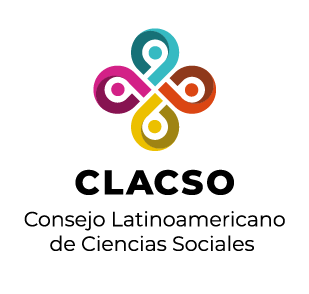Red de Bibliotecas Virtuales de Ciencias Sociales en
América Latina y el Caribe

Por favor, use este identificador para citar o enlazar este ítem:
https://biblioteca-repositorio.clacso.edu.ar/handle/CLACSO/258636Registro completo de metadatos
| Campo DC | Valor | Lengua/Idioma |
|---|---|---|
| dc.contributor | Cultura, Violencia y Territorio | - |
| dc.contributor | Epidemiología | - |
| dc.creator | Ramos Jaraba, Sara Milena | - |
| dc.creator | Quiceno Toro, Natalia | - |
| dc.creator | Ochoa Sierra, María | - |
| dc.creator | Ruiz Sánchez, Laura | - |
| dc.creator | García Jiménez, Marlly Andrea | - |
| dc.creator | Salazar Barrientos, Mary Y. | - |
| dc.creator | Bedoya Bedoya, Edison | - |
| dc.creator | Vélez Álvarez, Gladis Adriana | - |
| dc.creator | Langer, Ana | - |
| dc.creator | Gausman, Jewel | - |
| dc.creator | Garcés Palacio, Isabel C. | - |
| dc.date | 2020-06-01T20:45:56Z | - |
| dc.date | 2020-06-01T20:45:56Z | - |
| dc.date | 2020 | - |
| dc.date.accessioned | 2025-09-21T20:04:10Z | - |
| dc.date.available | 2025-09-21T20:04:10Z | - |
| dc.identifier | 1752-1505 | - |
| dc.identifier | http://hdl.handle.net/10495/14733 | - |
| dc.identifier | 10.1186/s13031-020-00273-1 | - |
| dc.identifier.uri | https://biblioteca-repositorio.clacso.edu.ar/handle/CLACSO/258636 | - |
| dc.description | BASTRACT: ABSTRACT: Background: In conflict-afflicted areas, pregnant women and newborns often have higher rates of adverse health outcomes. Objective: To describe maternal and child health indicators and interventions between 1998 and 2016 comparing high and low conflict areas in Colombia. Methods: Mixed study of convergent triangulation. In the quantitative component, 16 indicators were calculated using official, secondary data sources. The victimization rate resulting from armed conflict was calculated by municipality and grouped into quintiles. In the qualitative component, a comparative case study was carried out in two municipalities of Antioquia: one with high rates of armed conflict and another with low rates. A total of 41 interviews and 8 focus groups were held with local and national government officials, health professionals, community informants, UN agencies and NGOs. Results: All of the indicators show improvement, however, four show statistically significant differences between municipalities with high victimization rates versus low ones. The maternal mortality ratio was higher in the municipalities with greater victimization in the periods 1998–2004, 2005–2011 and 2012–2016. The percentage of cesarean births and women who received four or more antenatal visits was lower among women who experienced the highest levels of victimization for the period 1998–2000, while the fertility rate for women between 15 and 19 years was higher in these municipalities between 2012 and 2016. In the context of the armed conflict in Colombia, maternal and child health was affected by the limited availability of interventions given the lack of human resources in health, supplies, geographical access difficulties and insecurity. The national government was the one that mostly provided the programs, with difficulties in continuity and quality. UN Agencies and NGOs accessed more easily remote and intense armed conflict areas. Few specific health interventions were identified in the postconflict context. Conclusions: In Colombia, maternal and child health indicators have improved since the conflict, however a pattern of inequality is observed in the municipalities most affected by the armed conflict. | - |
| dc.format | 20 | - |
| dc.format | application/pdf | - |
| dc.format | application/pdf | - |
| dc.language | eng | - |
| dc.publisher | BioMed Central | - |
| dc.publisher | Reino Unido | - |
| dc.relation | 21 | - |
| dc.relation | 33 | - |
| dc.relation | 1 | - |
| dc.relation | 14 | - |
| dc.relation | Conflict and Health | - |
| dc.rights | http://creativecommons.org/licenses/by-nc-nd/2.5/co/ | - |
| dc.rights | https://creativecommons.org/licenses/by-nc-nd/4.0/ | - |
| dc.rights | Atribución-NoComercial-SinDerivadas 2.5 Colombia | - |
| dc.rights | info:eu-repo/semantics/openAccess | - |
| dc.rights | http://purl.org/coar/access_right/c_abf2 | - |
| dc.subject | Salud materno-infantil | - |
| dc.subject | Maternal and child health | - |
| dc.subject | Conflicto armado - Colombia | - |
| dc.subject | Servicios de salud materno infantil | - |
| dc.subject | Postconflicto - Colombia | - |
| dc.subject | Mortalidad materna | - |
| dc.subject | Mortalidad infantil | - |
| dc.subject | Infantil Mortality | - |
| dc.subject | Maternal Mortality | - |
| dc.subject | http://skos.um.es/unescothes/C02431 | - |
| dc.title | Health in conflict and post-conflict settings: reproductive, maternal and child health in Colombia | - |
| dc.type | Artículo de investigación | - |
| dc.type | http://purl.org/coar/resource_type/c_2df8fbb1 | - |
| dc.type | https://purl.org/redcol/resource_type/ART | - |
| dc.type | http://purl.org/coar/version/c_970fb48d4fbd8a86 | - |
| dc.type | info:eu-repo/semantics/article | - |
| dc.type | info:eu-repo/semantics/publishedVersion | - |
| Aparece en las colecciones: | Instituto de Estudios Regionales - INER/UdeA - Cosecha | |
Ficheros en este ítem:
No hay ficheros asociados a este ítem.
Los ítems de DSpace están protegidos por copyright, con todos los derechos reservados, a menos que se indique lo contrario.